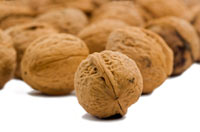The Process Of Making Biodiesel
Transforming vegetable oil and making it into a homemade fuel is one of the best option for optimizing cost against the use of petroleum diesel. Not only that but it is also very easy to do.
Nearly all the major European vehicle makers now provide their cars with warranties on the use of a pure form of biodiesel. Some individuals are manufacturing their own fuel. No negative effects from this harmless process have yet been heard of.
Home biodiesel production requires the following items:
* 1 liter pure, unused vegetable oil (cooking)
* 250 ml pure methanol
* either sodium hydroxied (lye) or potassium hydroxide
* An electric blender that has a pitcher made of glass
* A set of scales that can measure with precision, down to 0.01 grams
* 1 liter high Density polyethylene container
* 2 bottles for settling
* Duct tape
* Thermometer
All the equipment must be clean and dry. The process of making biodiesel is as follows:
Be sure to wear the necessary shielding equipment such as gloves, protective eye glasses, respirator, long-sleeved shirt and long pants. Be very cautious as you perform each step. Extreme care should be taken in handling the harsh chemicals used in the process. Do a quick inventory of all parts to reassure good quality. It is necessary to make sure the blender is securely sealed and all parts clean and dry.
Before pouring oil into blender, heat it to 550 C. Carefully add into your blender, the sodium methoxide (or potassium methoxide) which was made from the HDPE container. Next, seal the lid and, for 30 minutes, carefully blend the mixture at a constant speed and temperature.
The moment the process is complete, you must pour the mixture carefully into a mini-processor. After completing the process, let the mixture sit for 12 hours or up to one day. The vial for liquid gathering is devided into two sections. One Of The Fluid Is Yellow Colored While As The Other Is Dark Colored Which Are The Byproducts Of Glycerin Biodiesel is in the top layer. The color of the fuel created depends upon the oil used but is generally a pale shade of yellow. It may be cloudy or clear, which is not much of a problem. It will become clear after awhile.
You must then take a wash test. If it makes it through the washing test, proceed with washing the remainderof the biodiesel.
Related Articles
-
Diets To Get Healthy Weight
A healthy body is real boon for a man. Everybody in this world works t
-
How Much Exercise Do You Really Need To Do To Lose Weight?
Exercise is a necessary
-
Effective Weight Dieting
Some of them have very positive results
-
Losing Weight Via Exercise
Weight loss can be broadly classified in
-
Orange County Weight Loss - Weight Loss Solutions That Really Work
As a Orange County Weight Loss Pro, I am asked on a regular basis, Wha
-
Advice On Chest Muscle Growth
The muscles of the chest are probably the most vital muscles for me
- DON'T MISS
- Help - My Old Habits Are Keeping Me Fat! Two Surefire Ways To Break Free From The Habit Trap
- How the virtual world of avatars empowered women to lose weight
- Do You Know Your Chances? Digestive Disease
- Tips For Making Weight Loss Fast And Simple
- Tone Up Your Muscle Tissue And Increase Your Fat Burning Potential
- The Acai Berry - Not The Safest Method For Healthy Rapid Dieting
- Six Exercise Tips to Lose a Pound a Day
- Supervised Medical Weight Loss For Improved Results
- No Gimmicks: Five Foods for Weight Loss
- Weight Loss Programs: Right Key To Lose Weight




